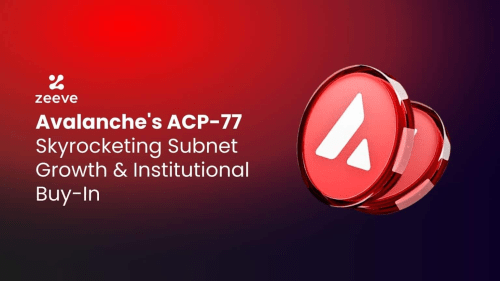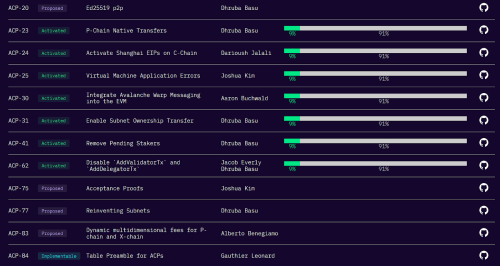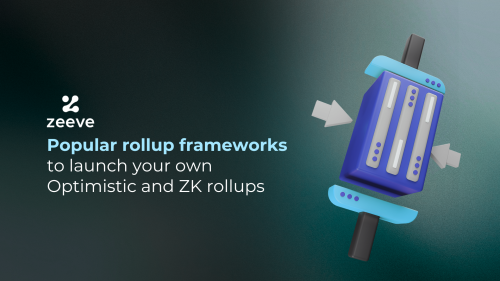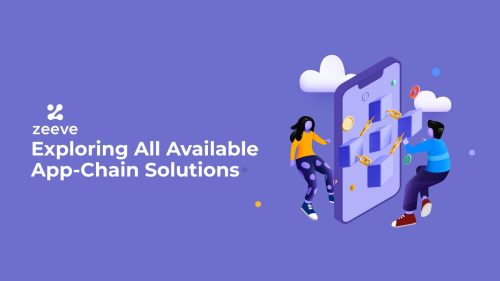Avalanche’s ACP-77: Skyrocketing Subnet Growth & Institutional Buy-In

In comparison to how a rollup or an app-chain ecosystem deliver value, the avalanche ecosystem outpace them by providing interoperability, flexibility, and performant chain experience (scalability) on a single L0/L1 layer through subnets. However, this practice, though very efficient from the standpoint of developer experience, since they deploy on a single environment, backfires when these chains/subnets have to do additional tasks like validating the main-chain.
Which, in turn, creates significant entry barriers because to deploy a subnet and enjoy all the above mentioned advantages, you need to pledge 2000 AVAX, which becomes $49,960 for a single subnet. Such costs might discourage developers with low budgets to launch a subnet on top of Avalanche. However, this inefficiency is changing after the launch of ACP-77.

What is Avalanche ACP-77?
An ACP is a concise document that introduces a change or best practice for adoption on the Avalanche Network. And Avalanche’s ACP 77 is a new proposal on the Avalanche ecosystem which is set to define the subnet creation. It is proposed by Dhruba Basu and will supersede ACP 13, borrowing some it its language. Under this new proposal, the avalanche ecosystem will be moving towards higher decentralization and a dynamic network environment.
You can track the progress of ACP 77 here:

Technical Enhancement of ACP-77 in the Avalanche Ecosystem
Decoupling Subnet and Mainnet Validation
In the existing Avalanche ecosystem, the subnets have to validate for themselves, along with the mainnet. This creates a significant resource burden and hardware investment. But after the Avalanche’s ACP-77 upgrade, the subnets will be validating for themselves only. As a result of this, it will lead to more subnets participating and make the avalanche ecosystem highly decentralized and dynamic at the same time because once they are decoupled from the mainnet, the subnets can have their own validator sets and operational logic, allowing them greater flexibility and operational efficiency/scalability.
Improved Validator Set management
At the moment, the subnets are non-autonomous, meaning, they have to abide by the rules of the mainnet. However, the Avalanche’s ACP-77 upgrade allows the subnets to frame their own rules for their validator sets. So, they can define their own staking rewards and operational efficiencies like data storage that better suit their purpose. For example, in the erstwhile set-up, the subnet had to pay a fixed fee to the P-chains to keep their validator sets updated. However, under the new upgrade, a dynamic base fee model will be implemented which shall significantly reduce the data storage cost because the storage is distributed among all the subnet validators registered to the P-chain, rather than assessing the economic activity on the subnet itself .

As you can see in the image above, the client/developer Dexalot, when they are using the Avalanche Subnet post-ACP-77 with 8 validators, the cost has significantly reduced even when compared to Celestia, which provides the lowest price for data availability/storage.
Optimizing the P-Chain Fee Mechanism
As we know that P-chains have been delegated the task of looking after consensus, coordinating the validators and creating subnets, under Avalanche’s ACP-77, the P-Chains will be only paid for the task that they perform, rather than paying them in full all at once for integration. The subnets will only maintain a periodic balance based on the nature of their usage to avail the services of the P-chain, which will be depleting upon usage and the subnets have to renew the same from time to time. In this way, it makes the operations flexible and dynamic for the subnets based on their demand.
Flexible Synchronicity
In the previous set-up, the subnets had to comply with the P-Chain, C-Chain and X-Chain. But under the new upgrade, these subnets will have to sync with only the P-Chain, which shall significantly reduce the resource investments and quicken the validation process.
Advantage of the Avalanche ACP-77 Upgrade
Staking and Reward Flexibility
After the rollout of Avalanche’s ACP-77 Upgrade, since the subnets are decoupled from the Avax mainnet chain, they can enjoy better autonomy in defining the reward mechanism. Which in turn, will make subnet operations tailored as per specific use-cases.
Reduction in off-chain cost
As it is already known that the more computation that you do every second, the more hardware intensive requirement you need to have. SInce, the Avalanche’s ACP-77 would allow the subnets to manage their own chains only, they would significantly reduce the hardware requirements. As per the AVA LABS, under ACP-77, the hardware cost to run the subnet validators will be reduced by 3 times a month. Which means, if you were spending $300 per month to run a validator node on subnet, under the new upgrade, you will have to spend only $100.
Enhanced Decentralization
Since there are no barriers to launching your own subnet after the Avalanche’s ACP 77 rollout, any application can launch their own subnet with very limited investment in comparison to the erstwhile setup. Why? Because in the erstwhile set-up, if a developer wanted to set up their own subnet, they had to invest 2000 AVAX which created a huge barrier. But, now since the subnet validators are not required to validate for the avalanche mainnet by pledging 2000 AVAX, it opens the ecosystem to more participation from the developers.
Better Game Infrastructure
As we very well know, gaming has been flooding on the Avalanche ecosystem. It has been primarily happening because the avalanche ecosystem is highly scalable to meet the gaming requirements. But the new upgrades make it an even more suitable chain to launch your gaming dapps because developers can launch with bare minimum hardware requirements and customize their game environment as per their need. In addition to this, they can even make their own native custom token for in-game payments.
Potential Challenges That Cannot Be Ignored
- Since in the former set-up, every subnet had to pledge 2000 AVAX to launch as a subnet, it created a favorable demand and supply for AVAX. However, the new upgrades abstracts the same and doesn’t compel a token lock, which might impact the tokenomy of the ecosystem about the supply and demand equation. However, a better look at it can be derived only when the ACP-77 has been up and running for sometime to identify the problem and create a solution for the same.
- Since subnets can create their own economic models and governance structure, it might make it hard for the existing L1s to blend with the new model where all the participating networks could work out a way for value capture.
Build Your Avalanche Subnet With Zeeve
Zeeve has been instrumental in helping launch your Avalanche subnet in a flash. Whether you want to launch your rapid node & network setup or you want to set up a RPC configuration and validator node, Zeeve delves into all of that and provides the necessary support to launch your own subnet. In addition to this, when you are deploying your subnet using Zeeve, there are more than 30+ integration partners that you can integrate on your subnet to improve its efficiency. For more information about Zeeve’s Avalanche Subnet-related services, contact us. Email us your queries or schedule a one-to-one call for a detailed discussion.






Responses